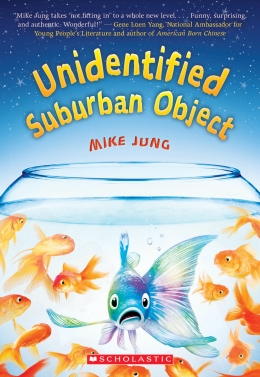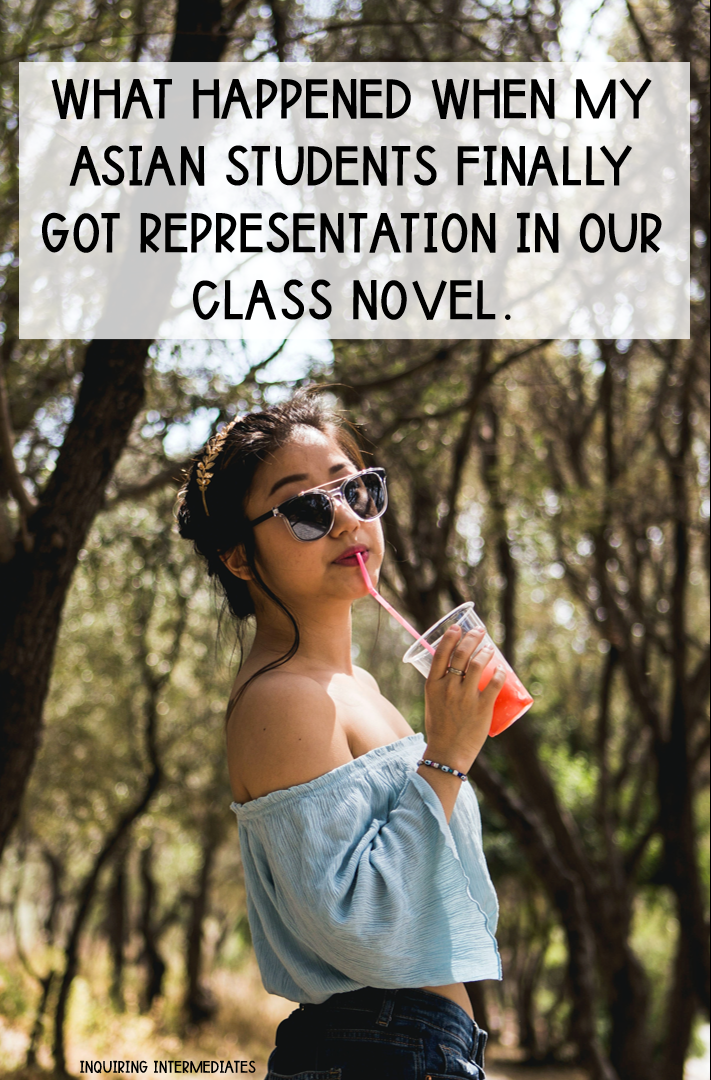
A few years ago, I read Mike Jung’s Unidentified Suburban Object to my fifth-grade class for the first time. As always, I introduced the protagonist before I began. Her name is Chloe Cho, so I wrote that on the board. One of my students, who shared her last name, shoved his hand up in the air and asked why his name was on the board. “Because that’s the character’s last name,” I said.
“But that’s MY last name” he replied.
“Yah, you have the same name,” I answered.
“But…but…that’s a Korean name!” he sputtered.
“I know,” I said, “she’s Korean.”
Immediately, my Korean students and one of my Chinese students burst with excitement. It was a bit bittersweet moment. It seemed like the boy who had spoken first had never considered that a character in a North American book could even be Korean.
As I’ve been stocking my classroom’s shelves for the last few years, I’ve noticed that it is REALLY difficult to find books written by Asian authors and/or by Asian protagonists. This is especially true when we take out historical fiction books about the Chinese Exclusion Act or the construction of the CPR. And it’s not that Asian people don’t write books; bookstores throughout Asia aren’t full of empty shelves. The core issue is that for a long time, people in North America have failed to invest in Asian stories.
Trust me, I get what you might be thinking. Teachers spend our own money to buy books and when we’re just trying to fill our shelves, it can be tempting to look for cheap books instead of books with diverse characters. I filled my library with 90% second-hand books for the first year, and beggars can’t be choosers.
But especially as we get more established, we do have a duty to be careful about whose voices we add, amplify, and exclude. One book that represents a student who is lacking representation is probably better than five books about straight, white, able-bodied kids.
Authors like Grace Lin, Hena Khan, Mike Jung, Aisha Saeed, Allen Say, Chieri Uegaki, Erin Entrada Kelly, F. Zia, Fawzia Gilani-Williams, Joy Kogawa, Linda Sue Park, Lisa Yee, Pooja Makhijani, Soyung Pak, Sylvia Liu, Thanhha Lai, Wendy Wan-Long Shang, Yangsook Choi have all written fabulous books featuring Asian characters.
Meanwhile, if money is short (which it always is), be extra conscious of the free resources you bring into your classroom. Check if any of the authors listed above have read-alouds available online (I know Grace Lin has some here!). See if their books are available in your school library, local library, or on Epic. Consider asking families at the school to donate money to the school library with the express purpose of purchasing books to better represent a specific community. And don’t stop with books! If you use videos or podcasts in your class, look for content created by Asian people. Grace Lin’s Kids Ask Authors podcast and Kelsey Lee’s fitness videos have been popular with my students.
Now, back to Chloe Cho from Unidentified Suburban Object. The connections so many of my students made with her were phenomenal. That book was a great mirror text for them. And the learning that so many of my students engaged in about what it is like to be a person of colour in a mostly-white community? Also phenomenal! Jung’s book was a great window into someone else’s world for them. For a few students, it may have even served as a sliding glass door. It was over twenty years ago now that Dr. Rudine Sims Bishop used those metaphors to describe books. We’ve had lots of time to reflect on that. Now it’s time to act.
Do you have any book recommendations with Asian characters? I’d love books for any age (although I’m having a harder time with novels). Share your favourites below!

